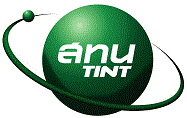MS01: ปริมาณรังสีที่บุคคลในครอบครัวได้รับจากผู้ป่วย ที่เข้ารับการรักษามะเร็งไทรอยด์ในโรงพยาบาลด้วยไอโอดีน-131: กรณีศึกษา
* มลุลี ตัณฑวิรุฬห์ พจี เจาฑะเกษตริน นภมน ศรีตงกุล และธนพงษ์ ทองประพาฬ
ภาควิชารังสีวิทยา คณะแพทยศาสตร์ศิริราชพยาบาล มหาวิทยาลัยมหิดล กรุงเทพ 10700
โทรศัพท์ 0 2419 6243 โทรสาร 0 2412 7165 E-Mail: simtt@mahidol.ac.th
บทคัดย่อ
การรักษาผู้ป่วยมะเร็งไทรอยด์ด้วยไอโอดีน-131 ความแรงรังสีสูงในโรงพยาบาล กรณีที่ผู้ป่วยไม่สามารถเข้าห้องน้ำด้วย ตนเองได้ จะทำให้ผู้ให้การดูแลมีความเสี่ยงจากการแผ่รังสีจากถุงปัสสาวะของผู้ป่วย ที่ได้รับการสอดใส่สายสวนปัสสาวะ ก่อนกินไอโอดีน-131 ถุงปัสสาวะจะถูกเก็บไว้ในถังตะกั่วกำบังรังสี แล้วถูกนำไปเททิ้งทุก ๆ 4 ถึง 6 ชั่วโมงในวันแรก และ 8 ถึง 10 ชั่วโมงในวันต่อ ๆ มา หลังจากบุคคลในครอบครัวผู้ทำหน้าที่ให้การดูแลช่วยเหลือผู้ป่วย ขณะพักอยู่ในโรงพยาบาลได้รับ คำแนะนำแนวทางการดูแลความปลอดภัยทางรังสีแล้ว จะได้รับเครื่องวัดรังสีชนิดพกพาติดตัว สามารถอ่านค่าการได้รับรังสี ได้โดยตรง มีการบันทึกตลอดเวลาสามวัน ที่ผู้ป่วยพักอยู่ในโรงพยาบาล และวัดต่อเนื่องอีกสองสัปดาห์เมื่อกลับบ้าน ผลการวัดปริมาณรังสีสะสมตลอดเวลา 16 วัน เท่ากับ 650 ? Sv ประมาณร้อยละ 44 (288 ?Sv ) ได้รับภายใน 24 ชั่วโมงแรก มากกว่าร้อยละ 70 (462 ?Sv ) ภายในเวลาใน 72 ชั่วโมงแรก ประมาณร้อยละ 25 (162 ?Sv ) ได้รับจากการเทปัสสาวะทิ้ง ปริมาณรังสีส่วนใหญ่ (488 ?Sv ) ได้รับจากการใช้เวลาอยู่ใกล้ชิดขณะดูแลผู้ป่วย แต่ยังคงอยู่ในขีดจำกัดไม่เกิน 1 mSv ต่อปี และต่ำกว่าค่ากำหนด 5 mSv ในปีใด ๆ สำหรับการได้รับรังสีในกรณีจำเป็นเช่นจากการดูแลผู้ป่วย
คำสำคัญ : การรักษาด้วยไอโอดีนรังสี ผู้ป่วยมะเร็งไทรอยด์ ผู้ให้การดูแล ปริมาณรังสี
MS01: Radiation Dose to Family Member of Hospitalized Patient Receiving I-131 Therapy for Thyroid Cancer: Case Study
*Tuntawiroon M, Chaudakshetrin P, Sritongkul N, and Thongprapal T
Department of Radiology, Faculty of Medicine Siriraj Hospital. Mahidol University, Bangkok 10700, Thailand.
Phone: 0 2419 6243, Email: simtt@mahidol.ac.th
Abstract
During high-dose I-131 therapy, hospitalized patient who is unable to walk to the bathroom is at risk of radiation burden to comforter from excreted urine. Foley catheter is usually placed in the patient before I-131 administration. The urine was collected and housed in lead shielding, emptied every 4 to 6 hours on the first day, and every 8 to 10 hours on subsequent days. After specific instructions with regard to radiation safety, family member designed as the caregiver of patient was provided an electronic personal dosimeter to directly measure radiation dose for three days in isolated hospitalization and two more weeks at home. The caregiver recorded time spent in contact with the patient and activities performed during these times. Total accumulative dose for 16 days was 650 ?Sv of which 44% (288 ?Sv) was from the first 24 hours and more than 70% (462 ?Sv) during the first 72 hours, and about 25% (162 ?Sv) from emptying urine bags. Most of the dose received (488 ?Sv) was from attending time spent in the vicinity of the patients. However, this was not exceeding the constraints of 1 mSv/y and well below the limit of 5 mSv in any one year for exposed caregiver and comforter.
Keywords: radioiodine treatment, thyroid cancer inpatient, caregiver,
radiation dose |


